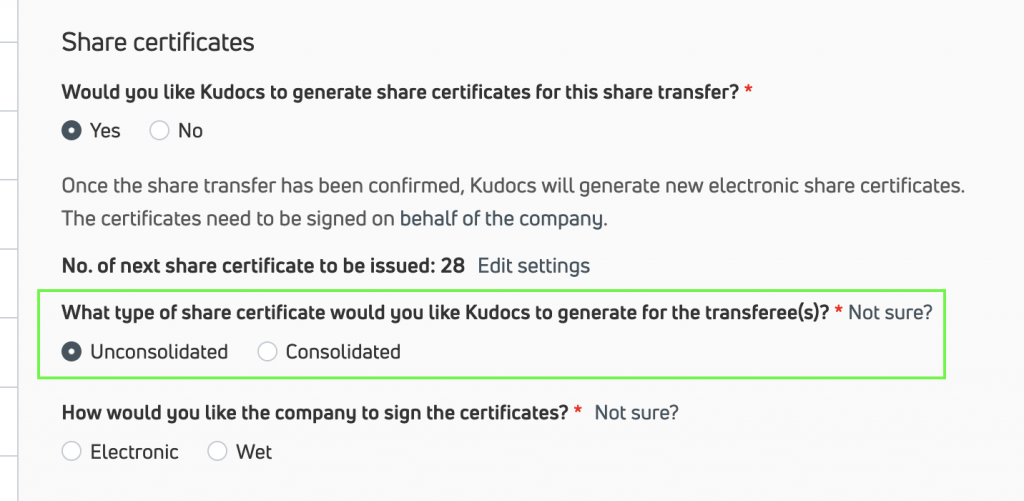Consolidated and unconsolidated share certificates
What is a consolidated share certificate? Every time a share transaction is completed, the shareholders affected should be provided with a new share certificate showing their shareholdings after that transaction. The share certificate can either be unique to that transaction, or it can be a consolidated certificate which shows their total shareholding. For example:
- shareholder has 1000 ordinary shares
- the company issues the shareholder 100 more ordinary shares
- the shareholder could either receive:
- a unique certificate for the 100 ordinary shares (which they would retain along with any other certificates they have which evidence the other 1000 shares); or
- a consolidated certificates for 1100 ordinary shares, cancelling all previous certificates.
Does Kudocs consolidate share certificates? Generally speaking, yes. Whenever you use Kudocs to generate share certificates, they are generated as a single consolidated share certificate, and all previous certificates generated in Kudocs are cancelled. This is to ensure that the company can easily keep track of share certificates, save you having to cancel share certificates, and to reduce the risk of duplication.
The exception to this is when you record a recent share issue or transfer. You will then have the option to generate consolidated or unconsolidate share certificates. If you select unconsolidated, you will end up with multiple, unique, share certificates for that shareholder in that share class. They will remain valid unless/ until you complete a process in Kudocs which generates a new consolidated share certificate which will replace them.
